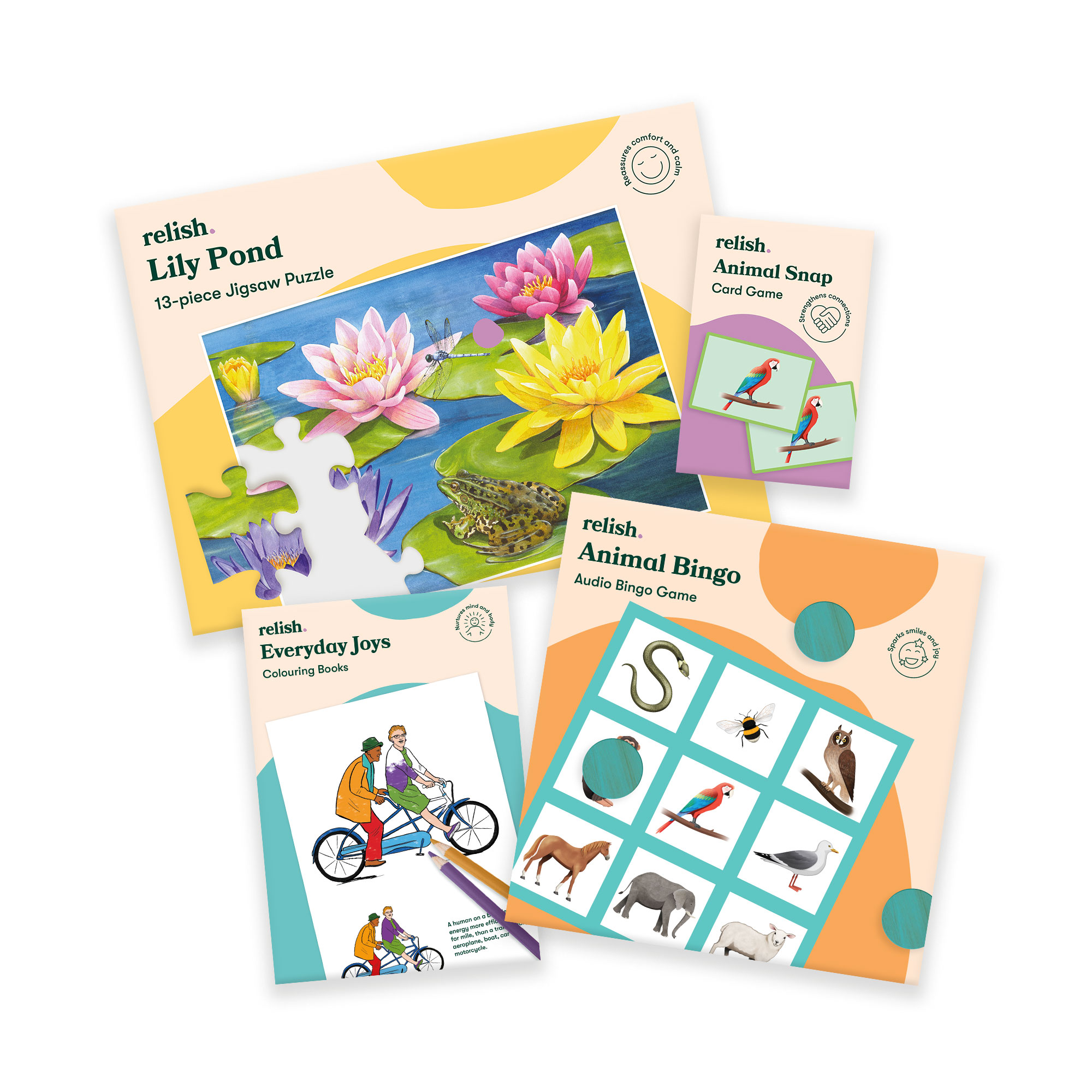METHODOLOGY & RESEARCH
For deciding what kind of products we need to deliver in a financial year, I was closely working with Operations, Sales, Marketing and Business Development teams to identify gaps in our offer. Also, I was doing secondary research, reading academic articles and following closely the sectors leading organisations to identify the right research questions to ask. But, the main part of the research was the one with real people. I was visiting care homes, talking to care staff and activity coordinators and family carers to make sure people affected by dementia are included in every stage of the design process. I was gathering the data from sales figures, customer insights, product reviews, competitor analysis, market research, interviews and surveys. After considering the company’s business strategy and analysing the data carefully, I was identifying themes, sort and condense them, define insights and frame opportunities. Then, these findings and opportunities were presented to the wider team to discuss and give the product plan a final shape. Then, I was detailing the budgeting and timelines for each opportunities.



